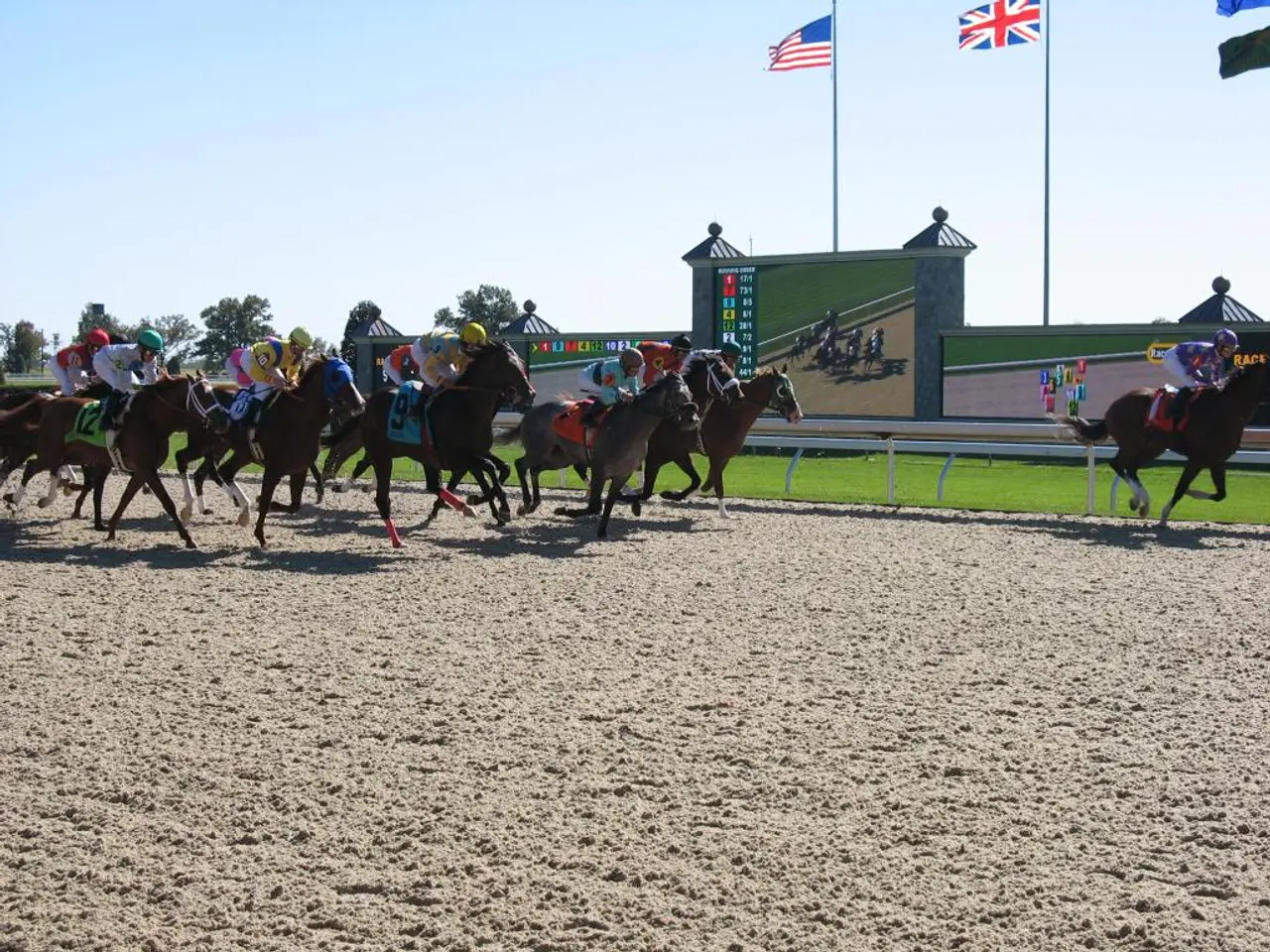Understanding the secret hand signals used by bookies in horse racing
The Fascinating History of Tic-Tac Men in Horse Racing
In the bygone era of horse racing, a unique and secretive language of hand signals known as tic-tac was used by a group of skilled bookmakers known as Tic-Tac Men. These men played a pivotal role in the betting world, ensuring the efficiency of the market and preserving the traditional culture of British horse racing.
Tic-Tac Men were a common sight at UK racetracks, often adorned with white gloves to make their hand signals more visible. Their main purpose was to swiftly and covertly communicate betting odds and market information between bookmakers, without speaking aloud. This method allowed them to move information efficiently, maintaining competitive odds in a crowded and noisy environment.
Their skill extended beyond mere communication, as they were also responsible for influencing the betting market by rapidly moving money across different betting rings in seconds. This was critical for managing risk and adjusting prices on the fly. Tic-Tac Men were essential for the old-style on-course bookmaking system, particularly before modern digital displays and communication methods became widespread.
The significance of Tic-Tac Men can be summarized as:
- Facilitators of betting market efficiency: They ensured odds stayed accurate and competitive by swiftly transmitting information between bookmakers.
- Symbols of traditional betting culture: Tic-Tac Men represented a bygone era of British horse racing betting where live communication was a highly skilled, physical trade.
- Highly specialized expertise: Mastery of the tic-tac signaling system was a technical skill that required practice and precision, crucial for survival in the high-stakes bookmaker environment.
As technology advanced, Tic-Tac Men gradually disappeared from racecourses, with electronic displays and other technology making their methods obsolete. However, their legacy remains an important part of horse racing history and lore.
The tic-tac system employed a series of hand and arm signals to represent different odds. For example, 5/4 was referred to as "Tips", and the hand signal for this was placing the right hand on top of the left wrist. Similarly, 5/2 was known as "Face" or "Bice n'alf", and the hand signal for this was for hands to come up to the face and finish by framing the nose.
Other slang terms for odds included "Carpet" for 3/1, "Ear'ole" or "Ear to rouf" for 6/4, and "Rouf" for 4/1. Some odds had more colourful nicknames, such as "Burlington Bertie", "Scruffy and dirty" for 100/30, and "Up the arm" for 11/8.
Tic-tac counting signals were also an integral part of the system. For instance, tapping two fingers on the chin represented 2, while bringing two clenched fists together in front signified 10. More complex combinations were used to represent higher odds, such as the shoulder tap and two fingers on the nose for 7, or the shoulder tap and one-finger-on-the-forehead signal for 6.
In summary, Tic-Tac Men were key bookmakers who used a secret language of hand signals called tic-tac to rapidly and covertly communicate betting odds on racecourses, playing a vital role before technological advancements transformed on-course betting communications. Their skill and cultural symbolism mark an important chapter in the history of horse racing.
- In the vast world of online betting and wagering news, a blog post could delve into the intriguing history of Tic-Tac Men, the silent communicators who once thrived in the horse-racing industry.
- As sports enthusiasts and racing fans peruse betting markets for their next horse-racing wager, they might find it interesting to know that the origin of some popular slang terms for odds stemmed from the Tic-Tac system, such as "Carpet" for 3/1 or "Rouf" for 4/1, used by Tic-Tac Men in the past.







